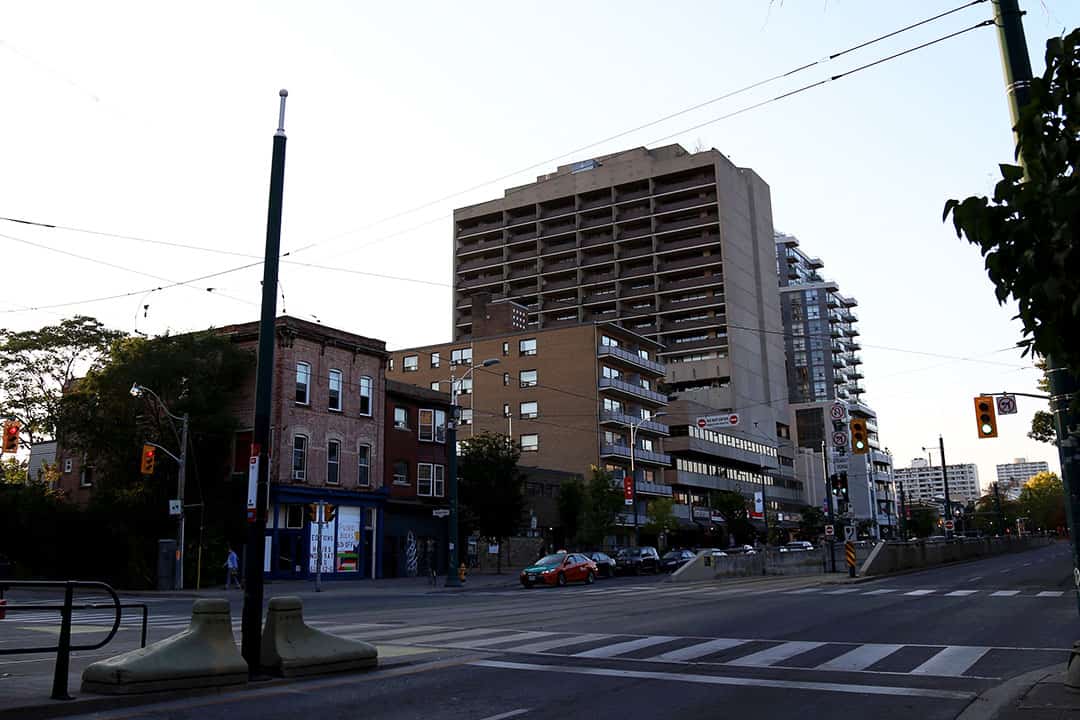Almost 2,300 additional beds will be needed by 2020 to reach the increased demand for student housing at UTSG, according to a housing issues report published in support of an amendment to the St. George Secondary Plan.
A residence demand analysis attached to the report claims 908 new residence spaces will have to be created to meet demand for first-year undergraduate students in three years’ time.
In addition, over 1,100 new beds are required to meet the university’s goal of having 40 per cent upper-year students living on campus; about 200 spaces will be needed to accommodate graduate and second-entry students. If implemented, these additions would bring the housing capacity to 8,767 beds in 2020 compared to the 6,478 spots currently available.
In the 2016–2017 academic year, U of T had approximately 66,599 students, 11 per cent of whom were living on campus.
In order to satisfy the near-term housing demand, the university plans to build new residences around campus, specifically at Spadina Avenue and Sussex Avenue and in the Huron-Sussex neighborhood.
The proposed Spadina-Sussex building, which is set to provide 547 new beds for both graduate and undergraduate students, will be a 23-storey student residence that will include office and retail spaces. It will also include the development of a three-storey townhouse to accommodate faculty and graduate student families. This project is a partnership between U of T, which owns 54 Sussex Avenue and 702–706 Spadina, and The Daniels Corporation, which owns the land at 698–700 Spadina.
The planned construction projects in the Huron-Sussex neighborhood are aimed mainly at housing graduate students. An eight-storey, 180-bed residence adjacent to the Graduate House is proposed to be built along 44–56 Harbord Street and will include a ground floor retail space and café. Other possible developments include 40–50 new laneway houses to be made available to graduate student families and two mid-rise buildings on Spadina, which will collectively house 520–620 new students.
The report also states that among the locations currently being scouted for future developments is the corner of Bloor Street and Spadina, which would include housing for students, student families, new faculty, visiting faculty, and senior level staff.
U of T says ‘yes,’ city says ‘no’
U of T’s new housing plans, especially the Spadina-Sussex residence, have been met with considerable resistance from the City of Toronto and the community. After four years of negotiations, U of T is seeking aid from the Ontario Municipal Board (OMB), which will mediate between the university, the city, and community members, including the Harbord Village Residents Association, according to Elizabeth Burke, U of T’s Director of Campus and Facilities Planning.
“We’re still waiting on the board to review the case to see if it’s eligible for mediation,” Burke told The Varsity. “The city is definitely on board with pursuing that path with us and once such mediation is agreed to then it’s the question of setting a date for the mediation, and this will be between the community members as well as the city and the university.” Burke also stated that the university is not pressing for an OMB hearing but to negotiate a settlement with the board’s help.
In an August 2017 report, city staff states that the proposed development at Spadina and Sussex violates the 2014 Provincial Policy Statement, as “the proposed development is not a level of intensification that is appropriate when taking into account the existing building stock and area.”
The city also claims in the report that the project does not comply with the Growth Plan for the Greater Golden Horseshoe, as it does not conserve cultural heritage resources in strategic growth areas. This refers specifically to 698 Spadina, currently the Ten Editions bookstore, which was designated as a heritage site by the Toronto and East York Community City Council (TEYCC) in late February because “the building has design value as an example of a late 19th century corner-store building type designed with a high degree of craftsmanship in the late Victorian style,” according to a report from the Chief Planner and Executive Director’s Office.
The city staff report concludes that the proposed development is “not appropriate for its context as it is too tall, too bulky, and does not provide appropriate tower setbacks” and “in its current form it is not good planning or in the public interest.”
In addition, the TEYCC sent a series of recommendations to City Council in September regarding the project. These included the suggestion of continuing to negotiate with the university to address issues such as appropriate heights and massing for the development site, as well as to participate in formal mediation with the OMB. The council also recommended that the city hold off on making a decision regarding an application to demolish six existing rental dwelling units at 698 and 700 Spadina until a decision is reached by the OMB.
Joe Cressy, Councillor for Ward 20, where the proposed residence at Spadina and Sussex would be located, did not respond to The Varsity’s request for comment.


